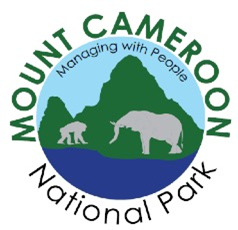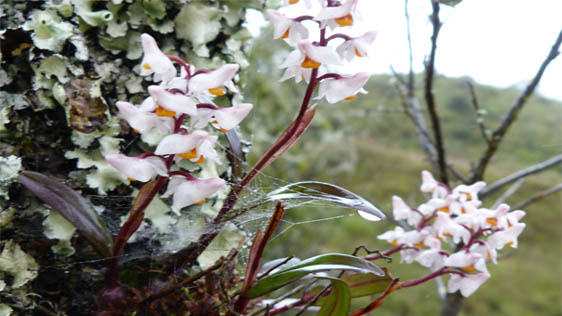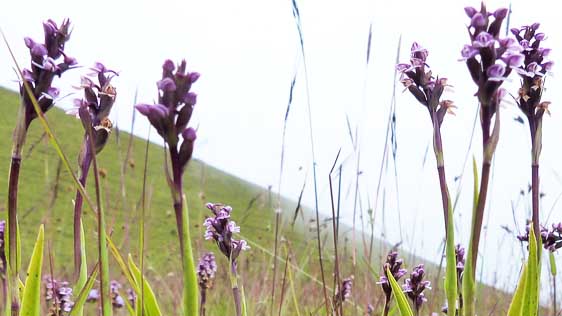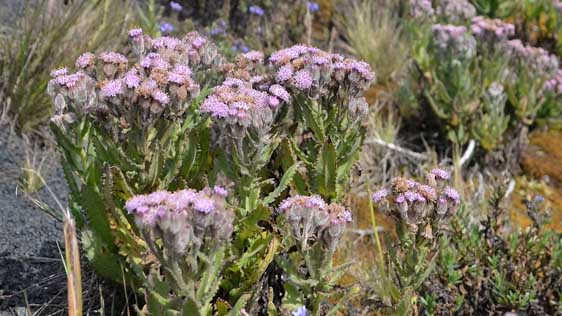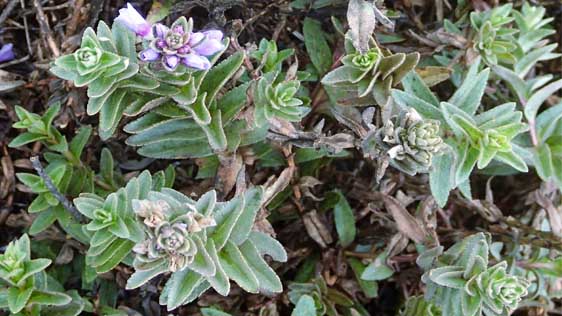Ecotourism in Mount Cameroon National Park
Quick Links
Reserve a trip to Mount Cameroon Now
Experience Nature, Support Conservation, Empower Communities
Mount Cameroon National Park (MCNP) is more than just a hiking destination, it is a living example of how tourism and conservation can work hand in hand. By choosing to explore our park, you are contributing directly to the protection of endangered species, the preservation of unique ecosystems, and the improvement of local livelihoods.
What Makes Mount Cameroon Unique?
- A Living Volcano: Mount Cameroon is one of Africa’s most active volcanoes, with eruptions every 20 years shaping a dramatic landscape of craters, lava flows, and caves.
- Biodiversity Hotspot: The park hosts over 2,435 plant species, including 49 found nowhere else on Earth, along with elephants, chimpanzees, drills, Preuss’ monkeys, and the rare Mount Cameroon Francolin
- Unbroken Vegetation Gradient: From coastal lowland rainforest to alpine grasslands at 4,100 m, it is the only place in West and Central Africa with such continuous ecosystems
Activities and attractions
Trekking
Discover our trekking trails from one to three days (or more), which will allow you to enjoy rare landscapes, through forest, grass land, lava flows…
Wild life Watching
Approach animals such as elephants or chimpanzees with our experienced guide
Flora on the mount
Mount Cameroon is known for its exceptional plant diversity and high number of endemic species with over 2,435 species of plants in more than 800 genera and 210 families (see S. Cable, M. Cheeks 1998 : the plants of Mount Cameroon – a conservation checklist).
Of these 49 plant taxa (species, subspecies, and varieties) are strictly endemic to Mount Cameroon and 50 are near endemic plant species (also occurring in Bamenda Highlands, Oku, Kupe, Korup, Obudu Plateau and Bioko.
Almost all of the plant families endemic to tropical Africa such as Huaceae, Medusandraceae, Lepidobotryaceae, Octocknemataceae and Hoplestigmataceae are found on Mount Cameroon and the surrounding foothills.
The second larges flowering plant family on the mountain after the Rubiaciea with 261 species are the Orchidacea with 147 species. The explanation for the high level of endemic plant species and the fascinating pattern of vegetation stems from the fact that Mount Cameroon is most likely part of an important Pleistocene refuge (Maley 2002).
Mount Cameroon culture
Mount Cameroon is very closely linked to the culture of the Bomboko and Bakweri people. Its native name Fako in Bakweri language and Mongo ma Loba (“Pillar of God”) in the Douala language. The local people have shrines on the mountain and inside the National Park. They are in relationship with “Efasa Moto”, the God of the Mountain, a powerful being, half human and half rock; generous and bountiful but severe to transgressors who are greedy and inconsiderate of the environment.
The Totem of the local people is the elephant “Njoku” in Bakweri language, the member of the secret “Male” society, the « Vato va njoku », can transform in elephants and have “their” elephant in the mountain. Another male secret society is the “Nganya” also having some animals as totems. On the female side there is the “Liengu” society.
The Bakweri use quite a number of plants for traditional medicine and rituals. For example the dried and grounded bark of the Mbeli tree from the grassland is used in a ritual to express unity between family members of the maternal lineage. The local population is supporting the efforts for the protection of the park and the conservation of their patrimony with all its natural and cultural values. “According to Bakweri oral tradition, Efasa-Moto is the male component of the Liengu la Mwanja or the legendary “Mammy Water.” It is said that after an agreement between the two, Efasa-Moto chose to live in the mountain and while the Liengu la Mwanja remained at sea. It is believed that Efasa-Moto and Liengu la Mwanja are the greatest spiritual figures that the earth has ever known.
Physically, Efasa-Moto’s is described as being divided vertically from top to bottom in a strange mixture of half human and half stone, and yet shaped in the form of a man giving a complete picture of a goat standing on its hind legs. Liengu la Mwanja on the other hand is a beautiful looking woman with an oval-shaped face, an enchanting smile with a love gap-tooth, overflowing hair of dark wool resembling a beautiful Indian lady with high and well curved hips. Efasa-Moto lives in the mountain alone. He maintains a rich healthy sugar cane plantation.
His visitors can eat the sugar cane on the spot but cannot carry any away. It is said that the sugar cane is has an unforgettable sweetness. Efasa-Moto is also said to be the mountain’s spiritual protector. In times of old, dead albinos were abandoned on the mountain as offerings of appeasement to the mountain god so that he could continue to bless the inhabitants at the foot of the mountain. Some elders say Efasa-Moto helped the Bakweri defeat the Germans in the Battle of Bokwango of 1891. The elders add that the Bakweri eventually lost the war because they betrayed Efasa-Moto’s trust.”
